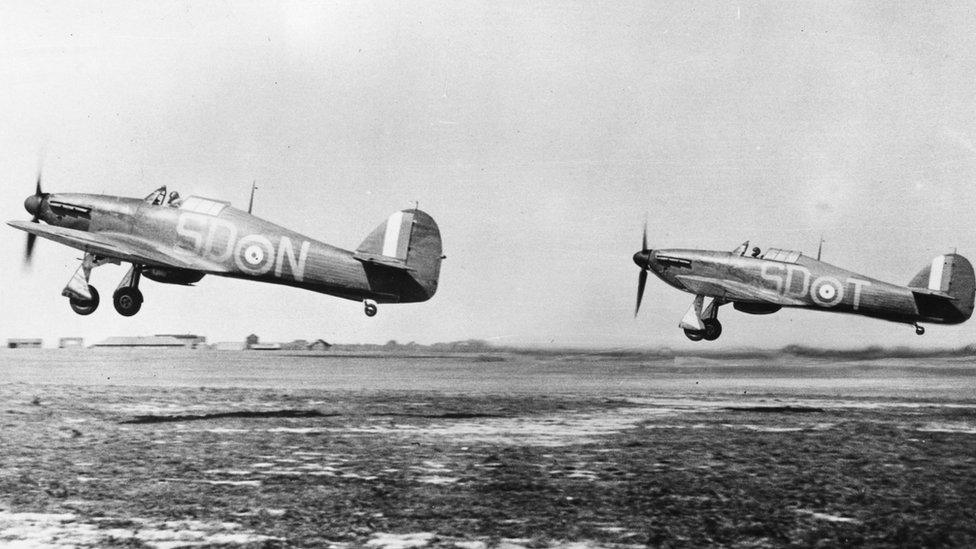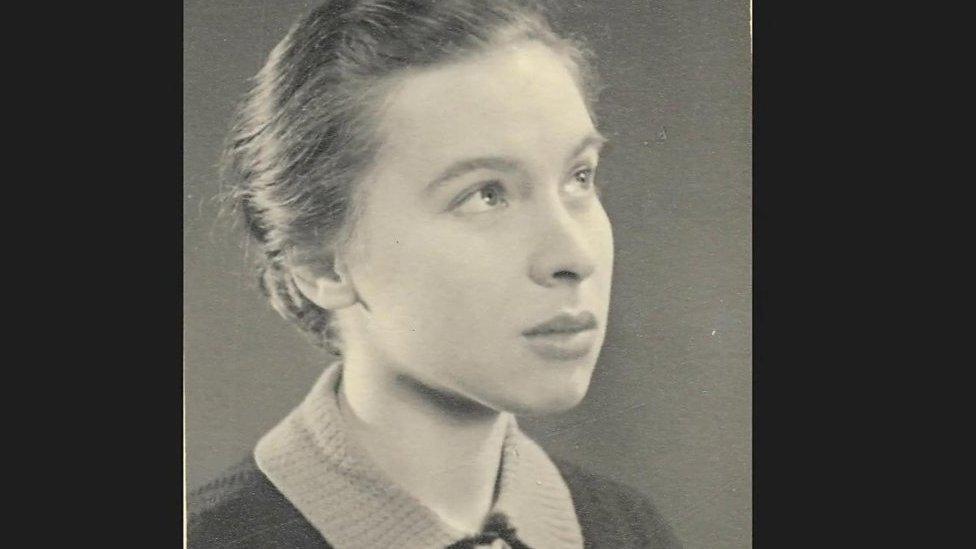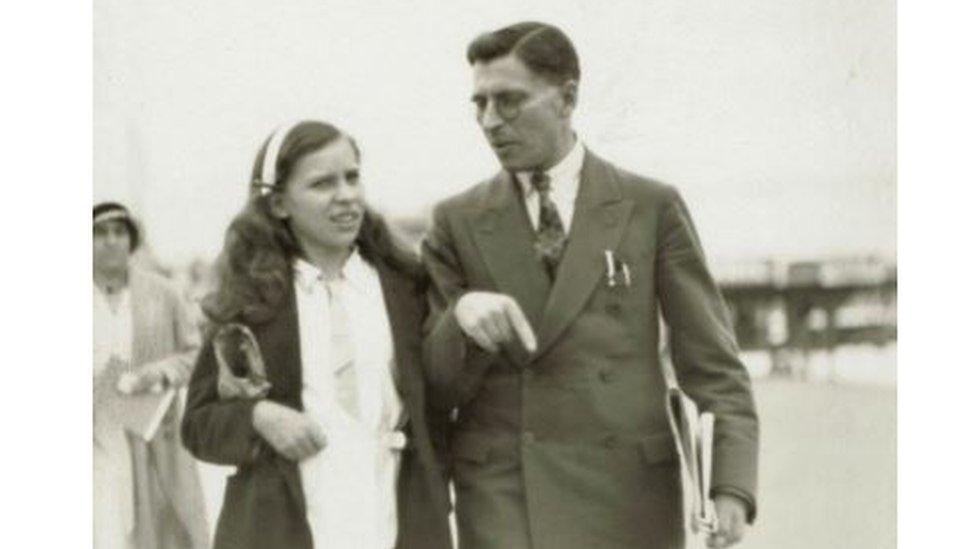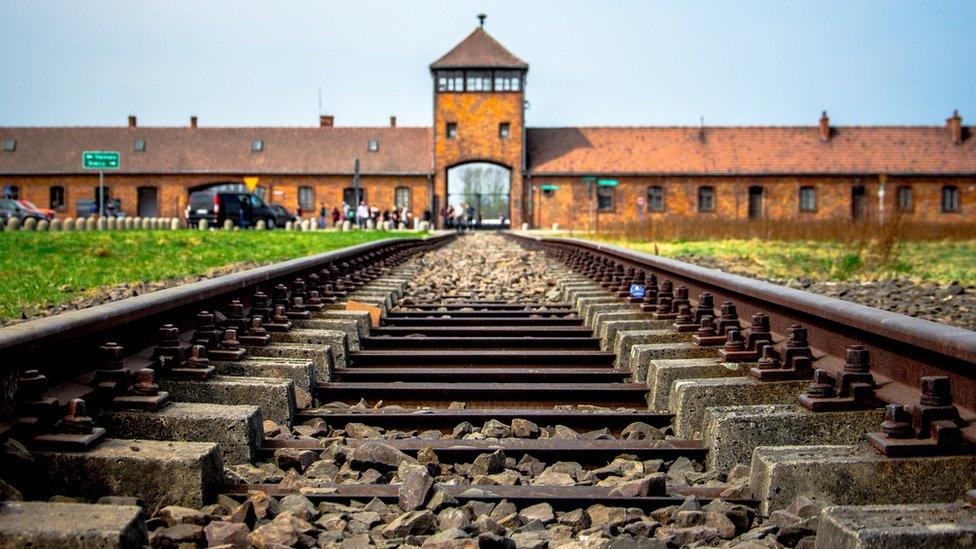Battle of Britain: Who was the teen who helped design the Spitfire?
- Published
- comments

Spitfires and Hurricanes were used by the Royal Air Force during the Battle of Britain
July 10 2020 marks 80 years since the start of the Battle of Britain .
It took place between Britain's Royal Air Force (RAF) and Nazi Germany's air force during the Second World War and all the fighting happened in the air.
Britain won the battle in October 1940 and Hitler called off his plans to invade the country.
The British military relied on well designed planes in order to help lead them to victory and the contributions of one young schoolgirl played a significant part in this.
Who was Hazel Hill?

Hazel was just 13-years-old when she helped her father with designs for the RAF aircraft
Hazel Hill was a 13-year-old girl living in Britain. Her father, Fred Hill, worked in the Air Ministry during the 1930s. This was a government department which was responsible for looking after all the affairs relating to the Royal Air Force.
Planes were developed during this time to help assist the RAF, one of which was the iconic Spitfire. Early models of the aircraft weren't advanced enough to withstand battles with the enemy and updates to the plane's design were made later on.
One of the improvements made to the aircraft was the number of guns built into it. Mr Hill believed it should include eight guns as opposed to the four that had been planned for initially.
However, he wasn't able to figure out the precise calculations he needed on his own. He decided to go home and ask his teenage daughter Hazel, who was brilliant at maths, to help him out.

Hazel with her father Fred who worked in the Air Ministry in rhe 1930s
Lots of people felt that eight guns would be too many for the planes as they believed they would end up weighing the aircraft down.
However, it turned out they were just enough for the British to win the battle. Having more guns helped provide the aircraft with the level of power they needed and the change played a big part in the British military's victory.
Without the calculations Hazel and her father came up with, the outcome of the battle may have been very different.
Hazel's granddaughter Felicity Baker says she remembers hearing her grandmother talk about her work on planes but only recently realised how significant it had been.
She said: " I'm always proud to be her granddaughter but I'm even more so now that her work has been recognised by the RAF and by a lot of people for the first time."
- Published10 July 2018

- Published21 January

